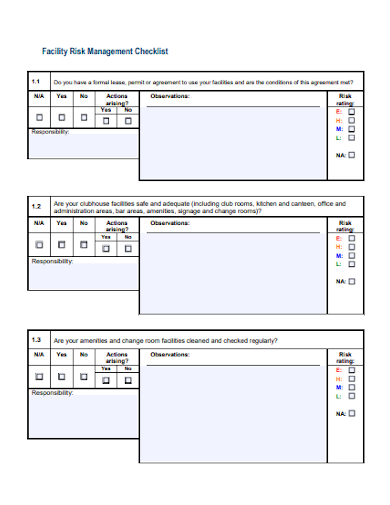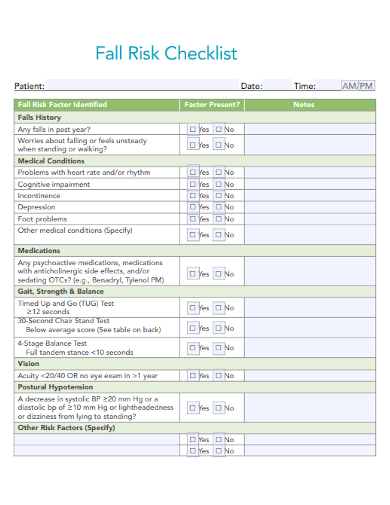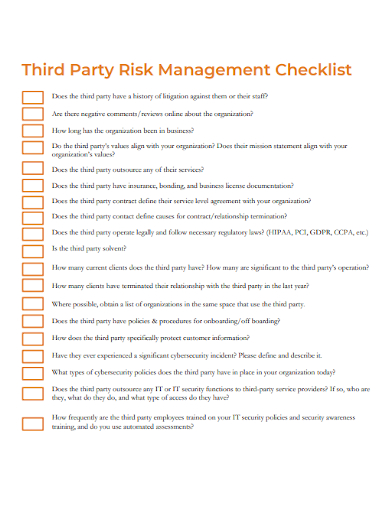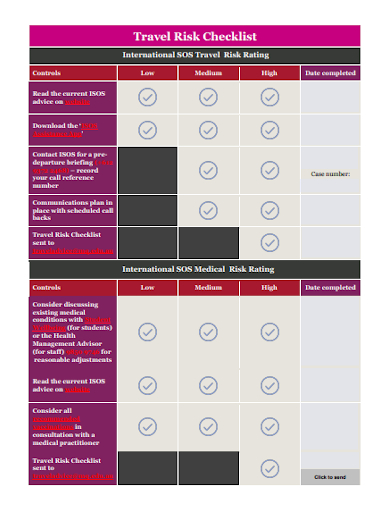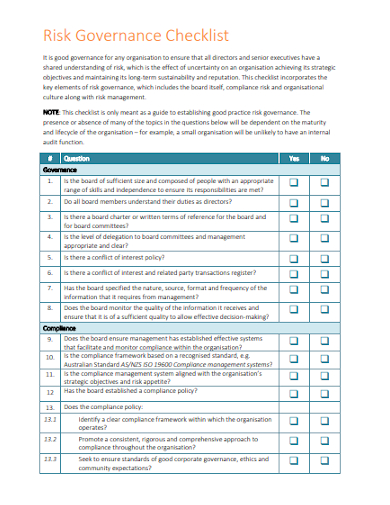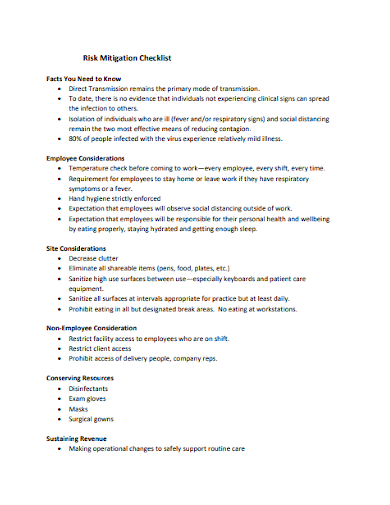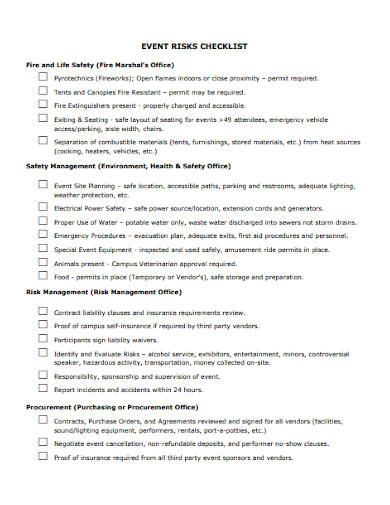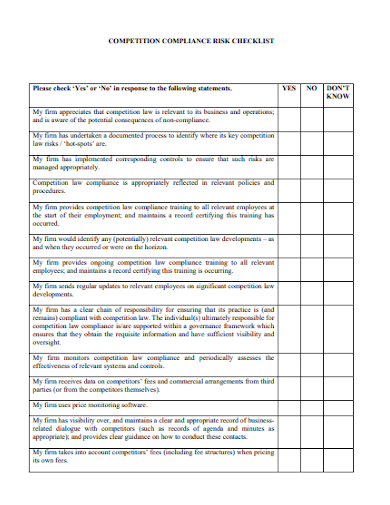Identifying risks are one of the major priorities of any business organization. Risk or threats can cause business disruptions, is quite costly, and would severely impact a company in many other ways. So, one of the first stages of the risk management process is risk identification. And you can even use such a process when a project is underway. An effective tool that can aid in the identification process is a risk checklist. This is to help learn from past projects or to detect different kinds of risk that can cause an impact on an organization and experiences from previous team members. The list helps estimators to better understand the required contingency and helps managers to control their working environment. To know more about this, let us discuss this further below. And if you need to start preparing for a checklist, we’ve got several risk checklists samples that are downloadable for free.
10+ Risk Checklist Samples
1. Checklist Risk Management Essentials Template
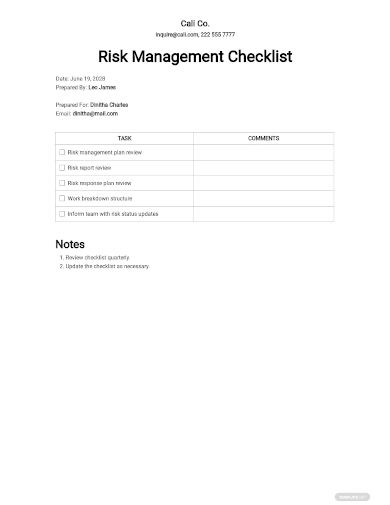
2. Roofing Risk Assessment Checklist Template
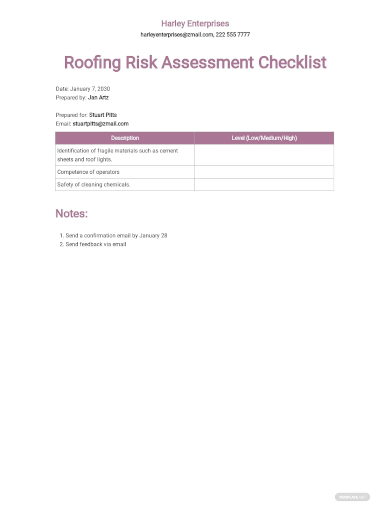
3. Pre-Construction Risk Assessment Checklist Template
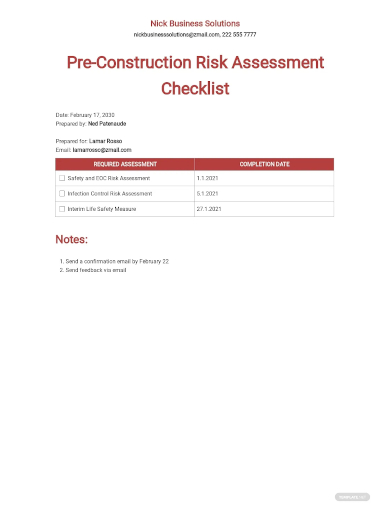
4. Facility Risk Management Checklist
5. Fall Risk Checklist
6. Third Party Risk Management Checklist
7. Travel Risk Checklist
8. Risk Governance Checklist
9. Risk Mitigation Checklist
10. Event Risk Checklist
11. Competition Compliance Risk Checklist
What Is a Risk Checklist?
The process of identifying risk for your organization or a project that you are about to work on is not an easy task. It requires several important processes or stages for you to be able to effectively extract the right information. Using a risk checklist is a convenient way to ensure the management is able not only to determine the risks but how the team is able to handle them. The checklist is meant to be shared with all those involved in a project or with relevant individuals in an organization. When working on a project, a risk checklist should not be used in the initial step of risk identification because it may not contain important project-specific risks. If a project team relies too heavily on a risk checklist, it could easily overlook project-specific risks, and the risks may not be phased correctly for the unique aspects of the project.
How To Create a Risk Checklist?
The sooner risks are identified, the sooner management can do something about it. Finding out about it too late can cause several implications that would not only delay a project or disrupt business operations but can cost a company a lot of money. The benefit of maintaining risk checklists is to ensure that common risks are not overlooked in the estimating or risk management process. Risk checklists are simple to maintain if the agency has a central estimating or risk management function. Preparing a specific risk checklist can be a broad matter since each company or project has its own unique function, but here are several tips to help you prepare an effective checklist.
I. Areas that are Prone to Risks
There are several key areas within an organization or project that are highly susceptible to risks. Identifying such areas is important to help management understand the different risks and the impact they can cause.
II. List Down All the Risk
Once you’ve determined the areas create a detailed list of all the risks that are associated with each area. You may want to establish what risks can impact the organization or project the most.
III. Impact Analysis
Conducting an impact analysis will help you determine the severity of each risk. Understanding such will help management think of better solutions or prepare them for the worst. Contingency plans are often developed out of these.
IV. Monitor and Review
It is important that a risk checklist should be reviewed at the start of a project and potentially several more times throughout the project. The list should be reviewed by a project team and the risks that may have impacts should be documented and added to the risk register and for analysis.
For organizations, risks can constantly change as well as their level of impact. That being said, management should always monitor their environment and the current trends. Being prepared is the only way to prevent disasters from inflicting more damage.
FAQs
What Is Risk Management?
This is the process where an individual or organization examines the events that have a negative impact. The process involves identifying and assessing the likelihood of threats from occurring.
Why Is Impact Analysis Important?
Conducting an impact analysis will help organizations determine and identify anticipated costs (qualitative and quantitative) of any disruptive incidents that may come your way. It is part of a plan to minimize risks.
Why Should Risk Analysis Conduct in Projects?
It is important to conduct risk analysis because this allows organizations to analyze different types of risk that can severely impact their project. This will also help the team decide if it is feasible to push through with the project.
So, start working on a risk checklist now in order for you to properly manage the risk and threats that may affect your project or organization. To make it easier for your to prepare don’t forget to download our free templates above!
Related Posts
FREE 10+ Construction Site Inspection Checklist Samples
FREE 10+ Sample Construction Risk Assessment Templates
FREE 10+ Food Safety Inspection Checklist Samples
FREE 9+ Sample Project Risk Assessment Templates
FREE 9+ HIPAA Security Risk Analysis Templates
FREE 6+ Product Liability Checklist Samples & Templates
FREE 4+ Warehouse Cleaning Checklist Samples
FREE 4+ Interruption Checklist Samples
FREE 3+ Vendor Onboarding Checklist Samples
FREE 3+ Predictive Maintenance Checklist Samples
FREE 28+ Checklist Templates
FREE 12+ Control Checklist Samples & Templates
FREE 11+ Risk Assessment Templates
FREE 10+ Sample Health Risk Assessments
FREE 10+ Company Vehicle Inspection Checklist Samples

